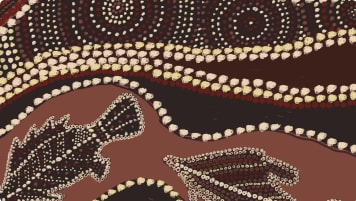The Mungo Man Debate: Where Next for His Remains?
Article for senior couples or solo travellers curious about Aboriginal history and that of outback Australia including New South Wales. Tours supported by articles such as this one about Mungo Man.
21 Sep 21 · 9 mins read
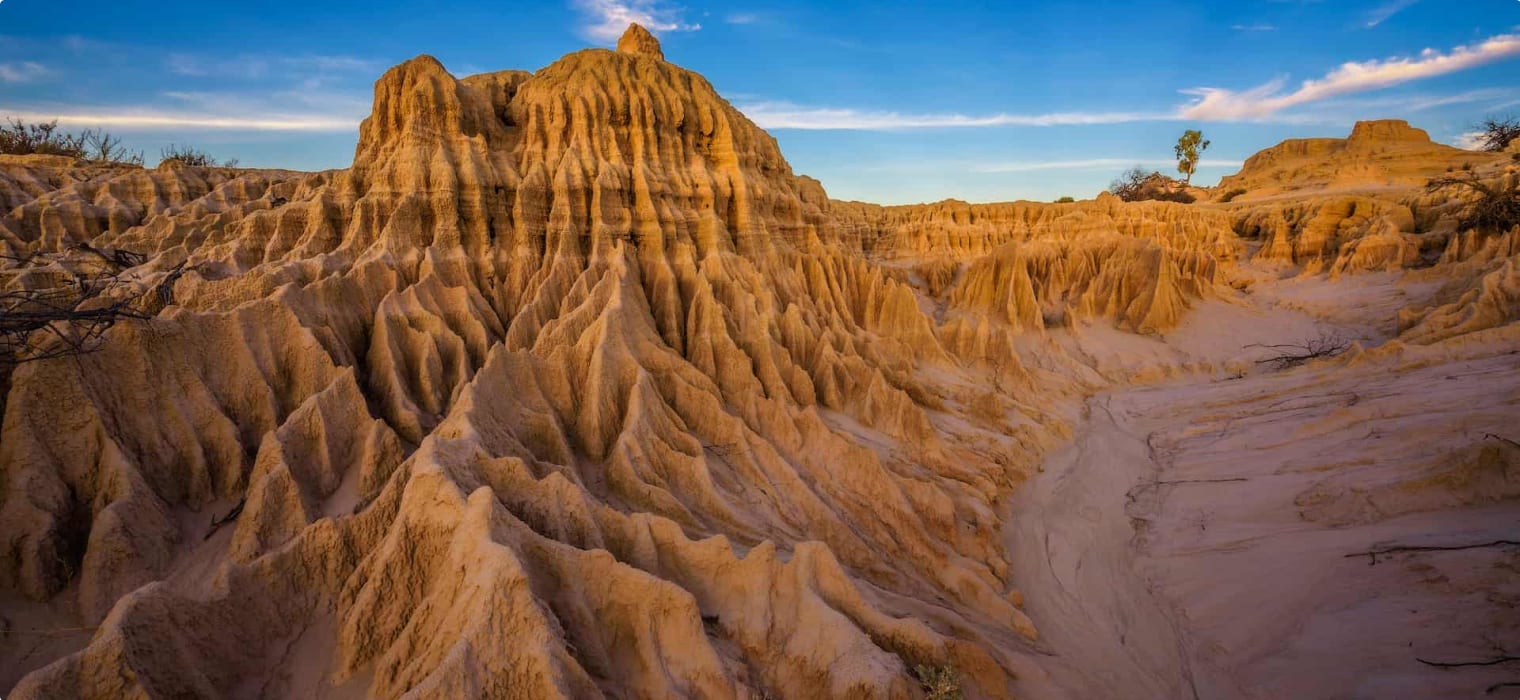
The Mungo Man Debate
By Marco Stojanovik
When the skeletal remains of Australia’s oldest and most complete human were unearthed in 1974, it redefined Australia’s history of human occupation. Named Mungo Man after Mungo National Park in the Willandra Lakes region of south-west New South Wales, the dried-up lake basin where it was found, the skeleton is the most significant human remains to be discovered outside of Africa. Dating back at least 42,000 years, Mungo Man was subject to complex funerary rites involving ochre and fire, indicating a cultural and spiritual sophistication not previously thought possible so far back in human history.
The ancient remains were hailed as a major discovery, but his removal from his burial site to be stored and studied at a university in Canberra caused the traditional owners great pain and anger. A long campaign ensued until finally, 43 years later in November 2017, Mungo Man was granted a return to his original resting place and honoured with a ceremony.
But even with the repatriation, a debate continues amongst the local Paakantyi, Mutthi Mutthi and Ngiyampaa peoples about what to do with the remains of their ancestors. Should the bones be reburied so that the spirit can rest in country or kept in an Indigenous run keeping place where they can be securely cared for and made available for important future research?
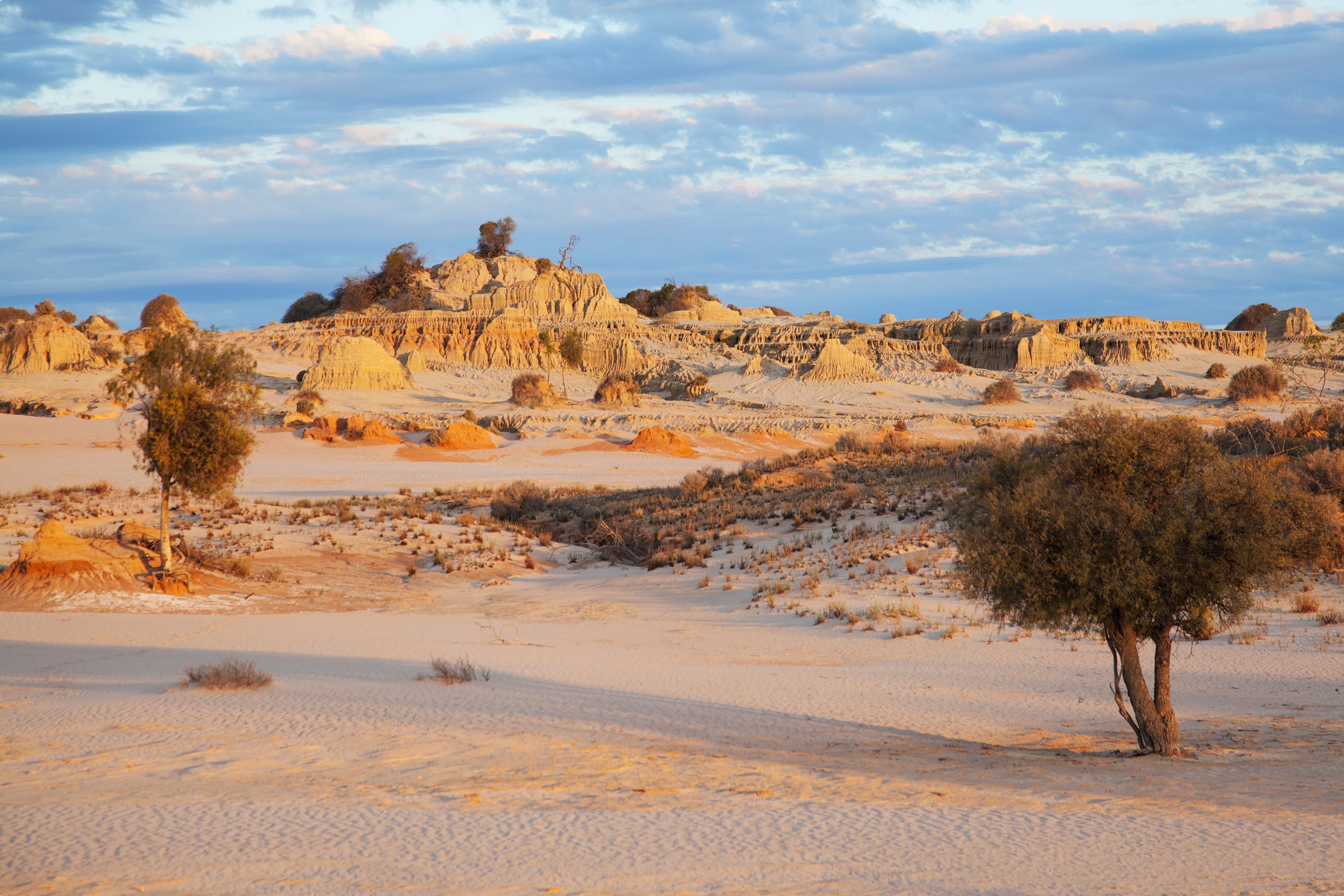
Discovering Mungo Man
The skeletal remains of Mungo Man were first discovered by archaeologist Jim Bowler in 1974 while researching the semi-arid landscapes of south-west New South Wales. Late one afternoon, venturing out after some heavy rain into the stunning landscape of Lake Mungo, which dried up about 15,000 years ago, Bowler spotted a gleaming white object poking out of the sand. Upon closer inspection, he realised it was a human skull, part of an entire skeleton.
Six years earlier, just 450 metres from this site, he had unearthed a female skeleton, which turned out to be amongst the oldest ancestral remains of modern humans (homo sapiens) in the world outside Africa. Further investigations had revealed that ‘Mungo Lady’ – as she is now called – was a young woman. She had been ritually buried: cremated, then crushed, burned again, and buried in the lunette.
Now, suspecting the new skeletal discovery could be as equally ancient, Bowler took the carefully excavated remains of Mungo Man 800km away to the Australian National University (ANU) in Canberra to be studied. Eventually, scientists would date both skeletons as being around 40, 000 to 42, 000 years old. Prior to the discovery, scientists believed that Aboriginal people had been in Australia between 15 and 20 thousand years.
Mungo Lady and Mungo Man revealed a much more ancient history. For many Aboriginal people, this was welcome confirmation of what they had long known: their people have effectively been in this country forever.
Investigations revealed that Mungo Man was 1.70 meter (5ft 6 inches) tall and around 50 years old when he died. Severe arthritis in his right elbow pointed to a life of spear throwing as a hunter gatherer, while the worn condition of his teeth indicated a diverse diet. Two of his canine teeth, in the lower jaw, had also been deliberately extracted during adolescence, suggesting initiation rites.
Like Mungo Lady, he had been buried in a complex funeral rite, placed on his back, with hands crossed in his lap and his body decorated in red ochre likely sourced about 200km from the burial site. The remains of a circular fireplace were also found nearby.
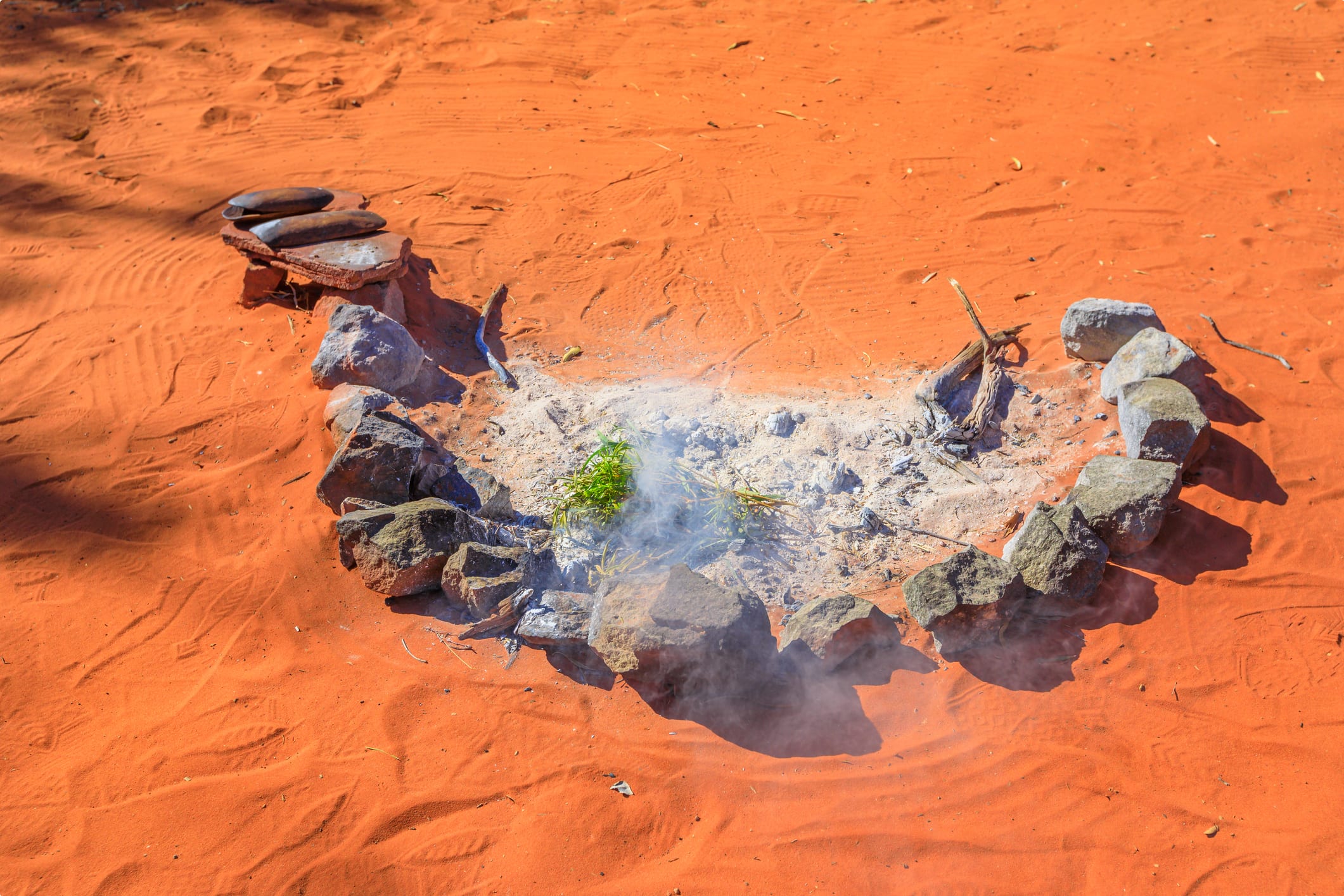
The revenant treatment of the body revealed a concern for the afterlife. It indicated rich spirituality, complex cultural practices, and sophisticated abstract thought, redefining the scientific understanding of early Australians. Given that ochre is not found naturally in the Willandra Lakes area, the discovery also provided evidence of some form of ancient trade occurring.
Bringing Mungo Man Home
The removal of Mungo Man immediately spurred anger from Aboriginal communities: the remains had been taken to ANU in Canberra for further study without first consulting and gaining permission from the traditional tribes of Lake Mungo – Mutthi Mutthi, Paakantji and Ngyiampaa. Tensions mounted between the Australian government scientists and Aboriginal community lasting throughout the 1970s and 80s, with the traditional owners issuing a moratorium on the removal of skeletal remains out of western NSW.
For the scientists, the discovery was seen as an archaeological triumph, universally valuable for science and national identity. They saw it as imperative that the skeleton be kept safe, as future developments in DNA research and improved X-ray tests might one day reveal new insights about the diet, life expectancy, health, and cultural practices of early humans, or about mankind’s origins.
For the traditional owners, on the other hand, the removal was an emotional, often traumatic, spiritual loss. They identify the human remains as being theirs, claiming an unbroken connection with them. This strong connection to the past is quite unique, with no such comparison recorded in the Middle East, Europe, or even in North America with the native Americans.
The groups sought to protect their cultural heritage through the reparation of ancestral remains. They appealed for the return of human remains as a form of apology for Australia’s tragic colonial history. For them, this was also a matter of respect for their ancestors. Like many indigenous groups, the local tribes believe that a person’s spirit will be subject to wandering the earth endlessly if his remains are not buried in Country.
In 1989, the parties agreed to a conference at Lake Mungo, in which a compromise was met, in which both would respect the others interests in a collaborative approach. As a result, further human skeletal remains have remained in situ, and in 1992 ANU returned Mungo Lady to Lake Mungo and the traditional owners. Relations further improved from here as young Aboriginal people trained as rangers, archaeologists, and heritage officials, and in 2007 the Paakantji, Ngyiampaa, and Mutthi Mutthi gained joint management of the parks.
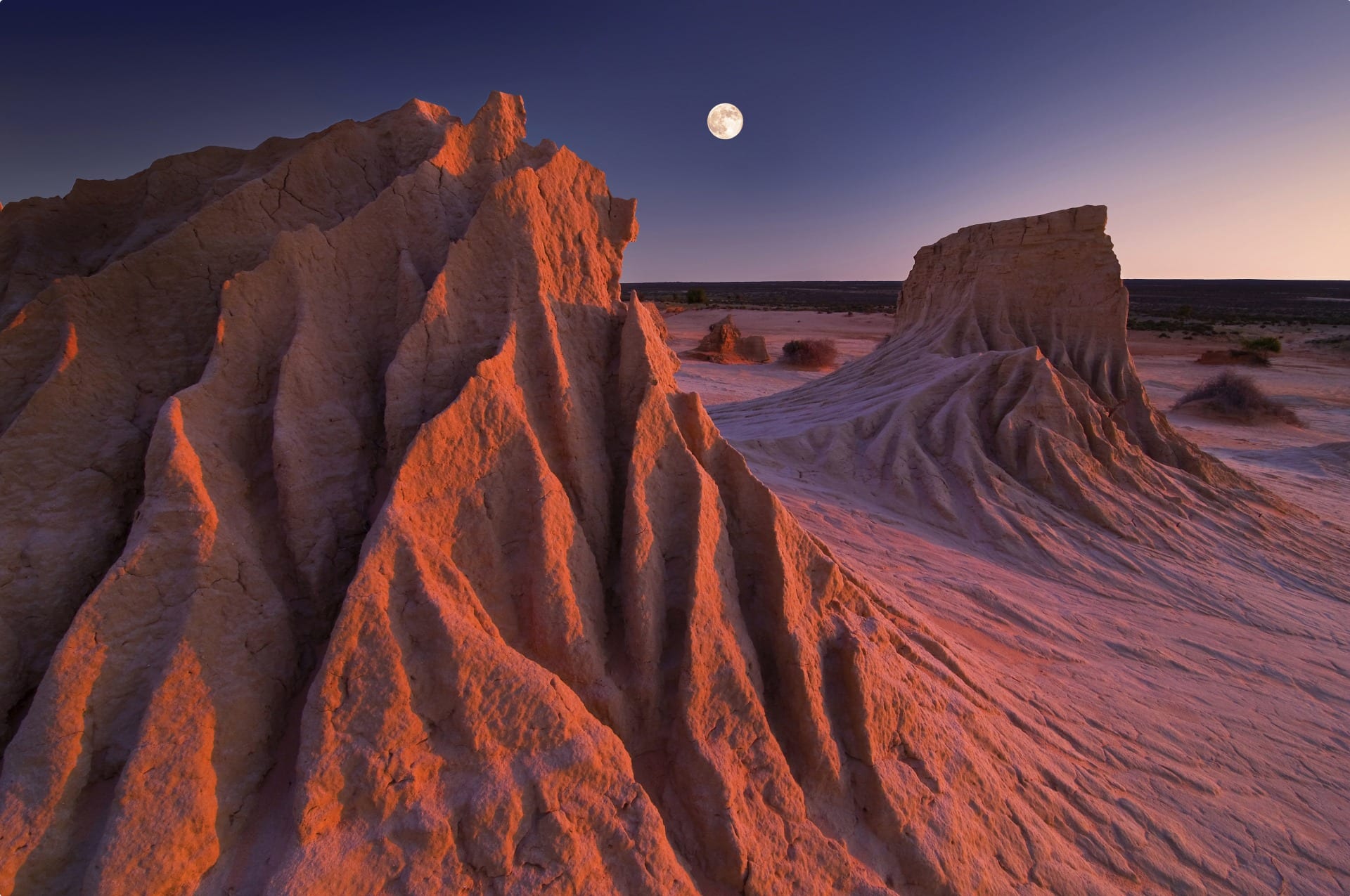
The process of returning Aboriginal remains accelerated in 2002 after the Australian government recommended that repatriations be unconditional. Although this directive had no legal force behind it, Australian institutions responded with increased energy. A network of heritage officers began systematically connecting with Aboriginal communities all over Australia to empty museum collections
Bureaucratic hurdles within ANU and government, however, meant Mungo remained in Canberra until only recently. Finally, in 2015, the university announced that Mungo Man would be returned to the traditional owners, with the vice chancellor Ian Young formally apologising for causing “ongoing grief to your communities”.
Until November 2017, Mungo Man was kept in the National Museum of Australia’s human remains storage facility on Canberra’s outskirt. Then, fitted in a hand-carved casket, he was transported in a black hearse across the Western NSW outback towards Lake Mungo, followed by a convoy of Aboriginal elders and activists.
Along the way, the repatriation event was marked by a traditional purification ceremony led by an Aboriginal elder that involved cleansing the coffin with smoking eucalyptus leaves. At Lake Mungo his coffin was laid out and covered with leaves, finally returned to his descendants.
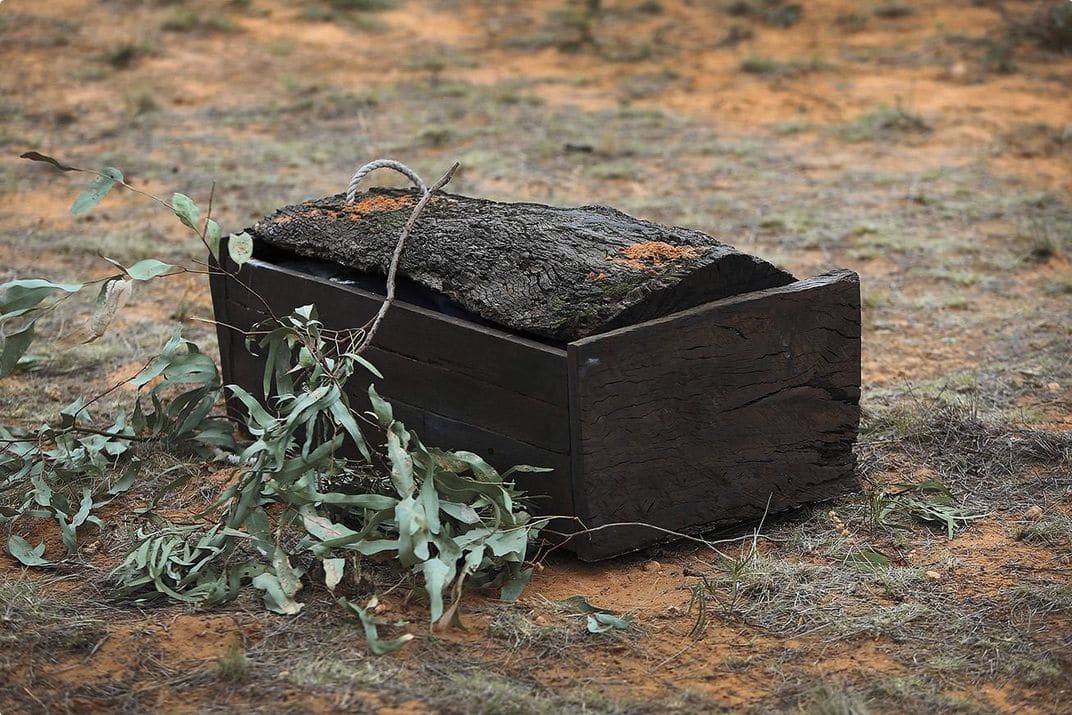
Mungo Man’s Fate: Reburial or a Keeping Place?
Since Mungo Man was returned to his county, he has been stored along with Mungo Lady in an interim secret location, with traditional owners divided about their final resting place. A local Aboriginal advisory group comprising of members from three traditional owner groups of the Willandra Lakes Regional World Heritage Area – the Mutthi Mutthi, Ngiyampaa and Paakantji — is tasked with providing advice on managing the area.
Initially, the group supported a plan for a simple reburial, either in unmarked graves or possibly with a plaque or monument to tell his story, but with no future access for scientific research. To have them remain on shelves in safes was seen as disrespectful and against cultural law.
However, recently the advisory group has started to splinter, with suggestions it has never been adequately resourced to consult their broader communities and is defying the wishes of some dead elders. Plus, another group related to the Paakantji, the Parintji, is not represented on the advisory group. This group themselves is seeking to have the lands of Mungo Man and Lady handed back to them through the Office of the Registrar of Aboriginal Land Rights in NSW as the rightful traditional owners.
Some in the community would rather like to see Mungo Man remain on his country, held in a secure keeping or resting place, possibly as part of a research centre. Under this scenario, the traditional owners would maintain control of the place, fulfilling the need to care for and respect the remains of their ancestors, but also hold the right to consider access to him for research.
A keeping place was initially proposed when the remains were returned to country in 2017 but had subsequently dropped off the agenda without a clear explanation. Proponents are now advocating for the option as safer and more secure than burying it out in the open where anyone could potentially find and steal it.
Some Indigenous stakeholders are divided over its nature, including whether it should have a monumental element. However, it is agreed that it should be run by Indigenous people and be a place where Aboriginal archaeologists and other scientists would continue limited forms of research.
Many scientists believe the materials are too important not to be studied further. Jim Bowler, the archaeologist who first unearthed the remains, always intended for the body of Mungo Man to be held in an appropriate keeping place. Like many of his colleagues, he acknowledges the Indigenous community’s right to decide Mungo Man’s fate, but he believes it would be inappropriate to bury the body as new scientific methods have the potential to reveal more about his life and death.
Bowler contends that the Willandra Lakes Region’s world heritage status – gained in 1981 – would be diminished by the reburial as it is dependent on the global significance of the remains. The remains represent the existence and acknowledgement of “modern human consciousness in a landscape which remembers the Gondwana days of a million years ago”, the geologist told The Guardian. And they should be “respectfully interred and acknowledged memorially”.
As the burial plans are proposed in a world heritage area, the federal environment department has called for the public to comment on it. The deadline for public comment has now passed and a federal determination is expected in early August 2021.
Tour of Mungo National Park
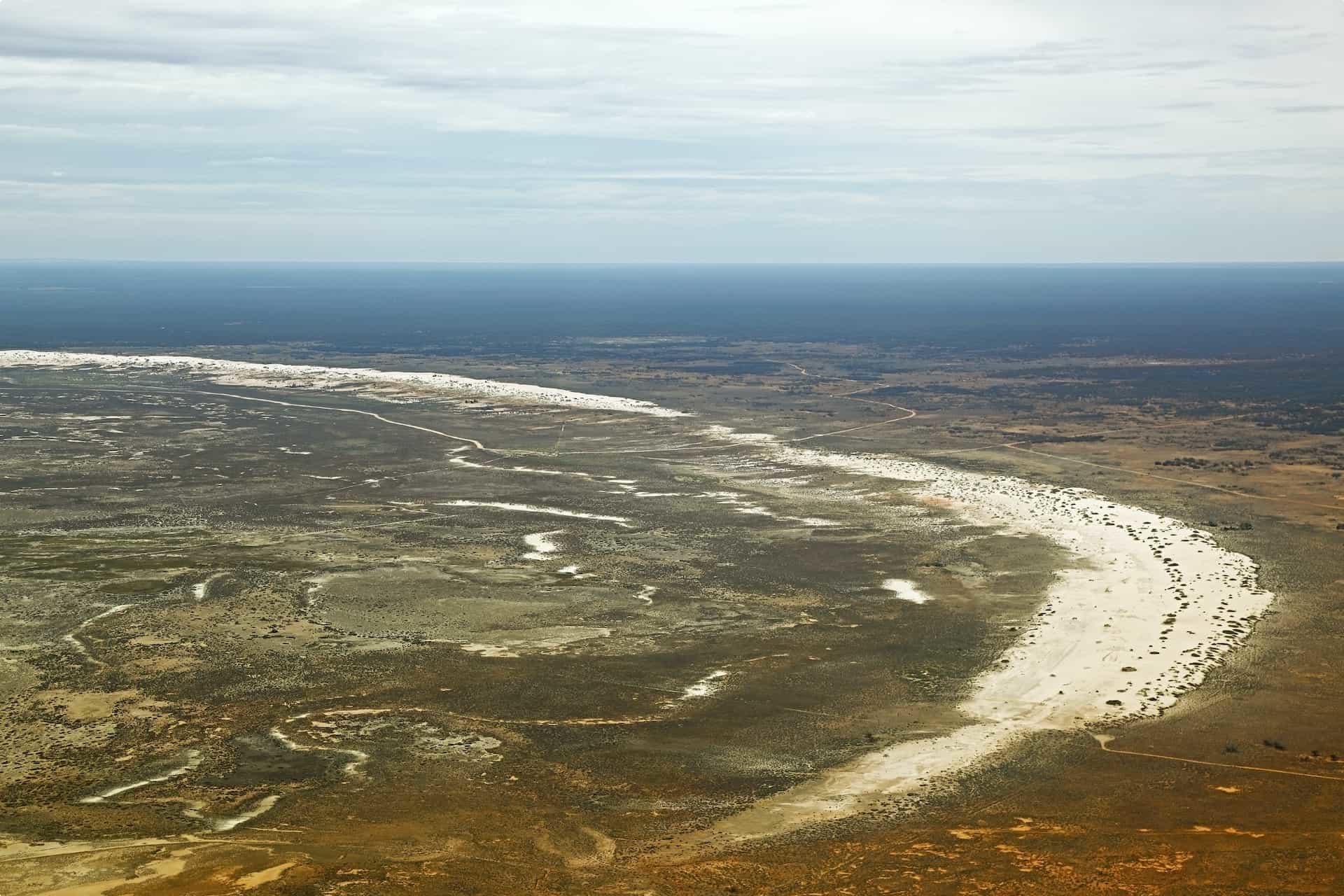
Odyssey Traveller visits Mungo National Park as part of our tour of Southern Australia, including World Heritage sites and more. Designed to make you re-think the way you see Australia, our tour focuses on the borderlands between South Australia, Victoria, and New South Wales. Beginning in Adelaide city, our tour heads east to Port Fairy, before heading to the Budj Bim World Heritage Site, an important place of Aboriginal aquaculture. We then go on to Mildura and the mallee, touring the spectacular scenery of Mungo National Park on a day trip from Mildura, before heading to the outback city of Broken Hill. Finally, our tour takes us through South Australia‘s spectacular Flinders Ranges and to the mining town of Burra, before returning to Adelaide city.
Travellers with an interest in touring Australia may want to check out some of our other tours. Our guided tour of Adelaide and surrounds isn’t just an Adelaide city tour, but takes in the boutique wineries of the Barossa Valley and McLaren Vale wine region, the historic Adelaide Hills and Fleurieu Peninsula, and the native wildlife – including the fur seals of Seal Bay – and remarkable rocks of Kangaroo Island. Our tour of the Eyre Peninsula, Yorke Peninsula and Gawler Ranges takes us to Port Lincoln, Australia‘s ‘seafood frontier’, for panoramic views of the Southern Ocean, and on to Baird Bay, where we see fur seals and Australian sea lions at their only mainland breeding ground. And our wildflowers tour of Western Australia takes in the incredible biodiversity of Australia‘s south-west, visiting stunning wildflowers in Esperance and Albany, and stopping in for a cellar door winery tour at the Margaret River, one of Australia‘s most celebrated wine regions.
Articles about Australia published by Odyssey Traveller:
- Mungo Man and Mungo Lade
- The Kimberley: A Definitive Guide
- Halls Creek
- Lake Argyle
- Purnululu National Park
For all the articles Odyssey Traveller has published for mature aged and senior travellers, click through on this link.
External articles to assist you on your visit to New South Wales:
- UNESCO: Willandra Lakes Region
- Mungo National Park
- Mungo Lady and Mungo Man
- Defining Moments: Mungo Lady
- Finding Mungo Man: the moment Australia’s story suddenly changed
- Australian Dictionary of Biography: Mungo Lady
- Mungo Man: Australia’s oldest remains taken to ancestral home
- A 42,000-Year-Old Man Finally Goes Home
- OPINION: It’s time to honour Mungo Lady
Related Tours

14 days
Mar, May, Jun, Jul, Aug +3Escorted small group tour of Western New South Wales
Visiting New South Wales
Discover the the Brewarrina fish traps, Aboriginal art at Mt Grenfell and visit the opal fields of White Cliffs. This small group also visits the World Heritage Site of Mungo man and lady stopping in Mungo National Park and other significant locations such as Broken Hill.
From A$9,250 AUD
View Tour
days
Mar, May, Aug, Sep, Oct +2Small group tour of World Heritage sites and more in the Southern States of Australia
Visiting New South Wales, South Australia
Discover the World Heritage Sites of the southern states of Australia travelling in a small group tour. A journey of learning around the southern edges of the Murray Darling basin and up to the upper southern part of this complex river basin north of Mildura. We start and end in Adelaide, stopping in Broken Hill, Mungo National Park and other significant locations.
Related Articles
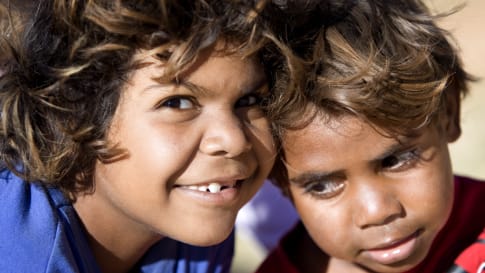
Aboriginal Songlines
Songlines trace the journeys of ancestral spirits who created the land and all natural phenomena. The creation stories as well as practical knowledge needed for survival in outback Australia. We experience this knowledge on our small group tours into Outback Australia.

Ancient Aboriginal trade routes of Australia
Ancient Aboriginal trade routes of Australia Trade was a central part of life for Aboriginal people prior to the British settlement of Australia. Trading routes criss-crossed the nation, dispersing goods, information, technologies and culture thousands…

Mungo Man and Mungo Lady, New South Wales
Part of a small group tour of World heritage sites on Victoria, NSW & South Australia for mature and senior travellers. Learn and explore in the Mungo National park about Aboriginal settlement and the fauna and flora of this National park.

The Arrival of Aboriginal Australians on the Continent
Tracing Aboriginal history via an outback small group tour for mature and senior couples or solo travellers provides an intriguing learning platform about Australia, rock art, trading and culture that traces a history possibly some 120,000 years ago.

Uncovering the ancient history of Aboriginal Australia
For small group escorted tours of Australia in Queensland, Victoria, New South Wales, South Australia, Tasmania, Western Australia and the Northern Territory a guide on Aboriginal culture for mature and senior travellers.
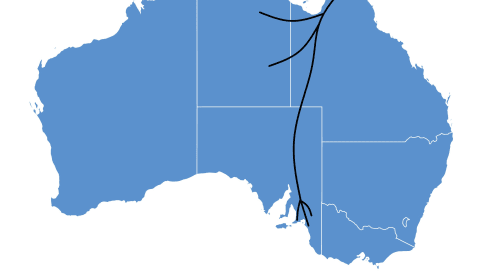
Key Aboriginal Trade Routes of Ancient Australia
Learn about the ancient trading routes that pre-dates the Silk road in this article to support small group tours for mature and senior travellers, couples and solo travellers. The routes developed technology and goods trading across the continent.
